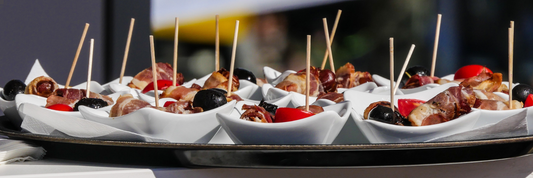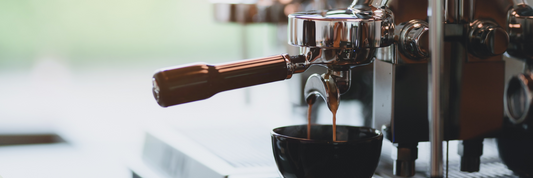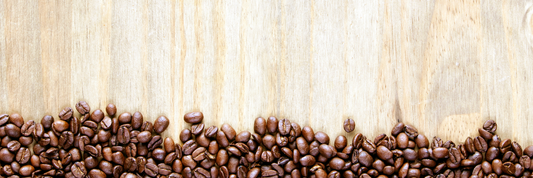When it comes to selecting the right paper cup size for beverages, businesses and individuals alike face various considerations. Whether you're serving coffee, tea, or cold beverages, choosing the proper size enhances not only the customer experience but also the practicality of the service. Understanding the dimensions of common paper cup sizes and their specific uses helps make an informed decision. In this article, we'll delve deep into paper cup sizes, discuss their typical applications, and provide helpful tips for choosing the best cup based on your needs.
- Should You Use Single Wall Cup or Double Wall Coffee Cup?
- The Essential Companion: How Paper Cup Lids Make a Difference
- What Are The Best Paper Cups To Use With Hot Water?
- Is Uncoated Paper Cups Really Useful for Coffee Shops?
Standard Paper Cup Sizes and Their Common Uses

As we delve deeper into the world of paper cups, it's essential to first understand the foundational, most frequently encountered sizes. These standard sizes of paper cups serve a multitude of everyday purposes and are the cornerstone of the disposable cup industry. Knowing these basic cup sizes will help you navigate your choices, whether you're packing for a zero-waste camping trip (where you might opt for reusable, but understanding these sizes helps in comparison) or planning an event. Let's explore the typical paper cup dimensions you're most likely to come across.
Common Paper Cup Sizes and Their Uses
Paper cups come in a wide range of sizes, and each has a different purpose depending on the beverage and setting. Below is a breakdown of the most common paper cup sizes and their applications, along with their dimensions in both inches and milliliters (ml) for global applicability.
|
Paper Cup Size (oz) |
Size (ml) |
Common Uses |
|
4 oz |
118 ml |
Espresso shots, sample cups, kids' drinks |
|
6 oz |
177 ml |
Water, small tea servings |
|
8 oz |
237 ml |
Standard coffee servings, tea |
|
10 oz |
296 ml |
Medium coffee, iced tea |
|
12 oz |
355 ml |
Large coffee, lattes |
|
16 oz |
473 ml |
Iced coffee, smoothies |
|
20 oz |
591 ml |
Large cold drinks, iced lattes |
|
24 oz |
710 ml |
Extra-large sodas, cold beverages |
Each of these sizes has its typical use, depending on the beverage being served and the setting in which it is offered. For instance:
- 4 oz cups are ideal for espresso shots or small portions, perfect for events where tasting or samples are needed.
- 8 oz cups are often the standard for small coffees or tea servings, particularly in cafés and coffee shops.
- 12 oz to 16 oz cups are commonly used for larger coffee servings, including lattes and cappuccinos, where more volume is desired.
- For cold beverages, such as iced coffee, smoothies, or even sodas, the larger sizes like 20 oz and 24 oz are preferred.

Matching the Size to the Purpose: Common Applications
Understanding the typical applications of each standard size of paper cup can guide you in making the right choice.
- 3-4 oz: Perfect for espresso, sample tastings (like a new flavor of energy gel for your next hike), or small servings of sauces.
- 5-7 oz: Ideal for water, juice, or small servings of other beverages, suitable for kids or quick refreshment.
- 8-10 oz: The go-to for a regular cup of hot coffee, tea, or even a small hot chocolate by the campfire.
- 12-16 oz: Great for larger servings of coffee, tea, soda, or iced beverages when you need a more substantial drink.
- 20-24 oz: Best for extra-large cold drinks, often found at fast-food restaurants, sporting events, or for those who prefer a significant amount of their beverage.

Beyond the Basics: Uncommon Paper Cup Dimensions
These sizes cater to niche markets and specific requirements.
- 1-2 oz (Medicine or Condiment Samples): Niche small size. These tiny paper cup sizes are significantly smaller than your typical espresso cup. Think of the small cups you might get at a pharmacy to take a dose of liquid medicine or the miniature cups used for serving samples of sauces or dips at a food fair. While not something a backpacker might typically carry for beverages, understanding these sizes highlights the vast range available.
- 32 oz or more (Stadium Drinks): Niche large size. On the other end of the spectrum are the truly large paper cups. These big paper cup sizes are often found at stadiums, concerts, or other large events where people want a substantial amount of their drink. Imagine getting a large soda at a baseball game – it likely comes in a cup of this size. While too bulky for backpacking, it’s interesting to note the existence of these larger formats.
- Specific sizes for vending machines or airline use: Industry-specific sizes. Certain industries have their own specific requirements for paper cup sizes. For example, vending machine cup sizes are often designed to fit precisely within the machine's dispensing mechanism. Similarly, airline cup sizes might be smaller to manage spillage in turbulence and fit on tray tables. These sizes are tailored to the unique constraints and needs of these environments.

Specialized Uses for Unique Sizes
These less common sizes often serve very particular functions.
- The tiny paper cup sizes (1-2 oz) are essential in healthcare for accurate medication dosages and in the food industry for controlled sampling or single-serving condiments.
- The large stadium cup sizes (32 oz+) cater to the demand for large-volume beverages at entertainment venues, ensuring customers have enough to last through a game or performance.
- Vending machine cups are designed for automated dispensing, ensuring a consistent and spill-free experience for the user.
- Airline cups prioritize practicality and safety within the confined space of an airplane cabin.
The Role of Material and Design in Size
The type of material used and the overall design of a paper cup can subtly impact its actual internal volume. For instance, a heavier weight paper or the inclusion of a polyethylene (PE) coating for waterproofing might slightly reduce the usable space inside the cup compared to a thinner, uncoated cup of the same nominal size.
Think of it like packing your backpack, the thickness of the material affects how much you can ultimately fit inside. Similarly, the cup design and capacity are intrinsically linked. A cup with a rolled rim, for example, might have a slightly smaller paper cup capacity than one with a straight cut, even if their listed size is the same.
Furthermore, the shape of the cup significantly influences the perceived cup size. A taller, narrower cup might appear to hold more than a shorter, wider cup with the same actual volume.
Understanding Volume vs. Practical Fill Line
It's important to distinguish between the total paper cup volume and the practical fill line. The listed size of a paper cup usually refers to its brimful capacity – the maximum amount of liquid it can hold when filled right to the very top. 1 However, for practical use, cups are rarely filled to this extent.
The actual cup capacity that you typically use is dictated by the practical fill line, which is lower to prevent spills and allow for comfortable handling. This difference is crucial to understand when choosing the right size for your needs. For example, a 16 oz cup might have a comfortable serving capacity of only 14 oz.

Choosing the Right Paper Cup Size: A Practical Guide
Now that we've explored the various dimensions and nuances of paper cups, let's get down to the practicalities. Selecting the right cup size is crucial for ensuring a positive experience, minimizing waste, and even managing costs. Here’s a practical guide on how to choose paper cup size for different scenarios.
Considerations for Different Beverages
The type of beverage you intend to serve is a primary factor in determining the ideal paper cup size.
-
Hot Beverages (Coffee, Tea, Hot Chocolate): For a standard serving of hot coffee or tea, an 8-10 oz cup is generally perfect. It provides enough volume for a satisfying drink while keeping it warm. If you're serving larger lattes or want to offer a more generous portion, a 12-16 oz cup might be the best cup size for coffee. For a quick espresso shot, a 3-4 oz cup is all you need.
When backpacking and wanting a warm drink, consider the volume you typically consume – a smaller cup might be preferable to conserve fuel for heating water. - Cold Beverages (Water, Juice, Soda, Iced Coffee): For water or juice, a 5-7 oz cup is often sufficient for a single serving. For larger cold drinks like soda or iced coffee, 12-16 oz or even 20-24 oz cups are common, especially in commercial settings. When carrying cold drinks on a hike, you might opt for a smaller, insulated reusable cup, but if disposable is necessary, consider the volume you'll need to stay hydrated.
- Specialty Drinks: Consider the typical serving size for specialty drinks like smoothies or milkshakes. These often require larger cups in the 16-24 oz range to accommodate the volume and any toppings.
Factors for Events and Gatherings
When planning events or gatherings, the choice of paper cup size depends on several factors:
- Number of Guests: For a large event, having a variety of sizes might be practical to cater to different preferences and drink types.
- Variety of Drinks: If you're serving multiple types of beverages (e.g., coffee, juice, soda), offering a medium-sized cup (around 8-12 oz) as a versatile option can simplify things. You might also want smaller cups for water or samples.
- Event Style: The formality of the event can also play a role. For a casual party, standard sizes are usually fine. For a more formal event, you might consider slightly smaller, more elegant disposable cups if reusables aren't feasible.
-
Waste Management: From an eco-conscious perspective, offering appropriate sizes can help reduce unnecessary consumption and waste. Providing a smaller option for water, for example, might prevent guests from taking a large cup and only filling it halfway.
For backpacking events, encouraging reusable cups is always the best option, but if disposables are a must, planning for proper disposal is key.
Business Needs and Branding Opportunities
- Cost-Effectiveness: Different sizes have different costs. Offering a range of sizes allows customers to choose based on their needs, potentially optimizing costs for the business.
- Customer Experience: Providing the appropriate size for the intended beverage enhances customer satisfaction. A small espresso in a large cup or an overflowing large coffee can both lead to a negative experience.
- Branding Opportunities: Paper cups offer a fantastic opportunity for branding. 1 Businesses often choose cup sizes that best showcase their logo and brand messaging. Offering a consistent range of branded cup sizes helps build brand recognition.
- Menu Offerings: The sizes of your paper cups should align with your menu. If you offer different sizes of coffee (e.g., small, medium, large), you'll need corresponding cup sizes. When choosing cups for cafes, consider the standard serving sizes in your region.
- Sustainability: Increasingly, businesses are considering the environmental impact of their choices. Opting for responsibly sourced paper cups in appropriate sizes can contribute to sustainability efforts.
Conclusion
In this comprehensive guide, we've explored the diverse world of paper cup sizes, from the standard cup sizes we encounter daily to the more unusual paper cup sizes designed for specific needs. We've also delved into the factors that influence our perception of size and the subtle differences in capacity due to material and design. Ultimately, understanding cup sizes is key to making informed decisions for various situations.
Frequently Asked Questions (FAQ)
Q1: What is the most common size for a standard coffee cup?
Answer: Typically, the most common size for a standard coffee cup falls within the 12-16 ounces range. This size is widely used in cafes and for personal home use.
Q2: How are paper cup sizes usually measured?
Answer: Paper cup sizes are usually measured in ounces (oz) for fluid capacity. This indicates the volume of liquid the cup can hold.
Q3: Are there standard international sizes for paper cups?
Answer: While ounces are a common unit of measurement, metric measurements (milliliters) are also used internationally. Additionally, some regional variations in what is considered a "standard" small, medium, or large size may exist.
Q4: What size paper cup is best for serving water at an event?
Answer: Generally, a 5-7 ounce paper cup is a suitable size for serving water at an event. This size provides enough for a refreshing drink without being wasteful.




